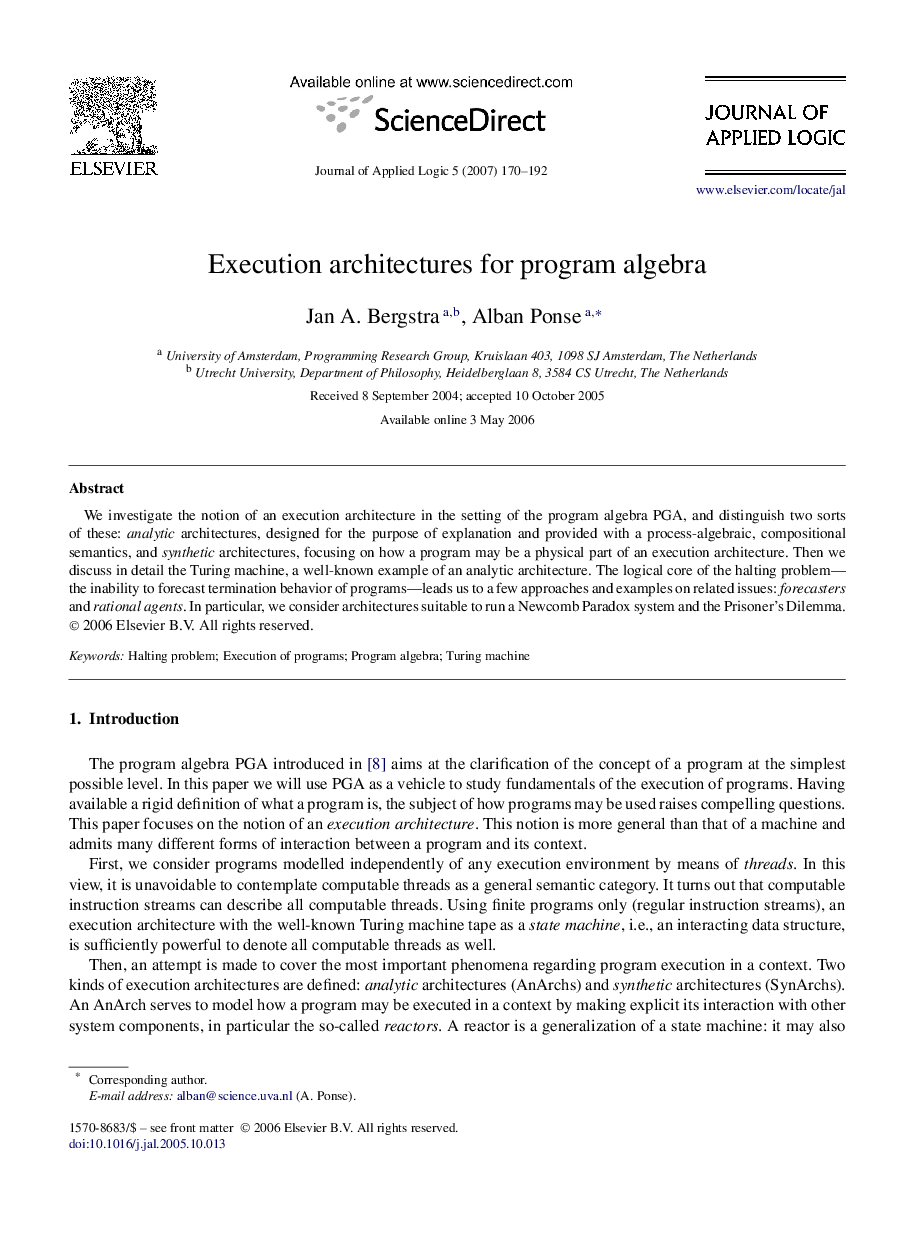| Article ID | Journal | Published Year | Pages | File Type |
|---|---|---|---|---|
| 4663295 | Journal of Applied Logic | 2007 | 23 Pages |
We investigate the notion of an execution architecture in the setting of the program algebra PGA, and distinguish two sorts of these: analytic architectures, designed for the purpose of explanation and provided with a process-algebraic, compositional semantics, and synthetic architectures, focusing on how a program may be a physical part of an execution architecture. Then we discuss in detail the Turing machine, a well-known example of an analytic architecture. The logical core of the halting problem—the inability to forecast termination behavior of programs—leads us to a few approaches and examples on related issues: forecasters and rational agents. In particular, we consider architectures suitable to run a Newcomb Paradox system and the Prisoner's Dilemma.
